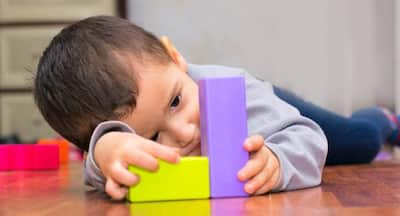
Together, we can create a future where all individuals have equal access to quality education regardless of their neurological differences.
Creating inclusive educational environments that accommodate the unique learning styles and needs of autistic children requires a thoughtful and individualized approach. It is crucial to educate yourself and others about autism spectrum disorder (ASD) and its various characteristics, strengths, and challenges to foster empathy towards individuals on the spectrum. Co-founder of Continua Kids, Dr Himani Narula, Developmental and Behavioural Paediatrician Director, shares that by taking the first step of understanding and acceptance, we can make the necessary adaptations to support autistic children’s educational journey.
Autistic Students
Developing an individualized plan for each autistic student is essential, and this should be done in collaboration with their parents, teachers, and any specialists involved in their care. This collaborative effort ensures that support services are tailored to the child’s unique needs, providing them with the necessary tools to succeed. Sensory sensitivities are common in autistic children, and creating a sensory-friendly environment is crucial. This can be achieved by minimizing visual and auditory distractions, providing quiet spaces for breaks, and using sensory tools or accommodations such as fidget toys or noise-cancelling headphones. These adjustments help autistic children feel more comfortable and better able to focus on their learning.
Visual aids are highly effective in assisting communication, organization, and understanding of expectations for autistic children. Visible schedules, cues, and organizers can significantly enhance their learning experience. Furthermore, establishing structured and consistent routines within the classroom can help autistic students thrive. A predictable environment enables them to navigate daily activities more quickly and confidently.
Utilizing a variety of multi-sensory modalities, including visual, auditory, and kinaesthetic approaches, allows autistic students to access information in ways that suit their strengths. This approach ensures that they can engage actively in their learning process. Effective communication strategies are also vital. Visual supports, such as visible schedules and social stories, assistive technologies like speech-to-text software and communication apps, and alternative forms of communication, such as gestures or picture exchange systems, all play crucial role in facilitating effective communication for autistic children.
READ RELATED: Taco Bell Will Start Serving a Brand-New Crunchwrap Tomorrow
Promoting positive social interactions and fostering friendships is essential for creating a supportive and accepting classroom culture that supports inclusion. Schools can implement social skills training programs and peer mentoring initiatives to encourage meaningful connections among all students. Collaboration with specialists, such as occupational therapists, speech-language pathologists, and behavioural therapists, is highly beneficial for meeting the developmental needs of children with autism. By incorporating their recommendations and interventions within the classroom, we can provide comprehensive support addressing various aspects of a child’s development.
Conclusion
It is essential to recognize that every autistic child is unique, and their progress should be regularly assessed. Making necessary adjustments and maintaining open communication with their parents or guardians ensures their continued growth and success. By fostering a welcoming and inclusive educational environment, we create a platform for autistic children to thrive and reach their full potential. Together, we can create a future where all individuals have equal access to quality education regardless of their neurological differences.
Total Wellness is now just a click away.
Follow us on
window.addEventListener(‘load’, (event) => {
// $(document).ready(function(){
$(‘#commentbtn’).on(“click”,function(){
(function(d, s, id) { var js, fjs = d.getElementsByTagName(s)[0]; if (d.getElementById(id)) return; js = d.createElement(s); js.id = id; js.src = “//connect.facebook.net/en_US/sdk.js#xfbml=1&version=v2.3”; fjs.parentNode.insertBefore(js, fjs);}(document, ‘script’, ‘facebook-jssdk’));
$(“.cmntbox”).toggle();
});
// });
});







